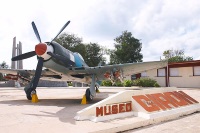
In April 1961, the United States (under the auspices of the CIA) launched an attack on Fidel Castro's government, attempting to overthrow it by securing the beach-head at Playa Gíron. The 'Bay of Pigs' invasion, as it has come to be known, was a humiliating failure for the US, only serving to strengthen the Cuban people's support of Castro.Today, the fascinating Bay of Pigs Museum (Muséo Playa Gíron) stands as a simple record of the Cuban force's victory. Visitors can view maps and displays detailing the course of events as they transpired, as well as actual planes flown by the Cuban army during the siege, fragments of shot-down enemy planes, tanks, mortars and machine guns used in the battle, plus much more. There is also a touching exhibition of photographs and biographies of the 156 Cuban soldiers that were killed during the invasion.Anyone with even a passing interest in modern history - or how US foreign policy has shaped the world in which we live - will find the Bay of Pigs Museum utterly enthralling. Budget at least two hours to take it all in.
Address : Playa Gíron
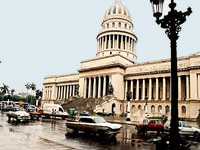
One of Havana's grandest pieces of architecture, the Capitolio is an important landmark and one of Centro Habana's major touristic sights. It was designed to resemble the US Capitol in Washington DC, and the similarity is obvious. A monumental stone stairway leads to the vast domed hall, from where tours will take visitors beyond the doors to elaborately decorated chambers that once housed the seat of Cuban Congress.Today, it is home to the National Library and Academy of Sciences, and many of its rooms are still used for state events. It also houses a planetarium and a museum. Directly beneath the dome lies an imitation 24-carat diamond set into the marble floor, from where all highway distances between Havana and all sites in Cuba are measured.The building is today a bit rundown and the inside is often closed for renovations. Even so the outside makes a great photo spot. The area is a hot spot for vendors, artists and beggars which can make it interesting but be sure to watch your belongings carefully.
Address : Paseo de Marti, Centro Habana
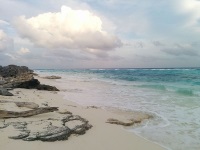
One hundred and ten miles (177km) southeast of Havana is the popular diving and snorkelling paradise of Cayo Largo. The island offers about 16 miles (26km) of white sand and crystal sea, where it is possible to swim and dive among grottos and sandy valleys full of crustaceans, sponges, coral and fish of every hue, shape and size.There are other numerous smaller cays accessible from the beach, each with their own natural treasures such as Cayo Iguanas, an isolated spot inhabited by iguanas. The living coral reef is also a big draw for visitors. It is possible to rent motorcycles, bicycles, horses and watersports equipment to make the most of a visit to Cayo Largo, which can be reached by yacht, or by daily air connection from Havana.Cayo Del Sur is the second biggest island in Cuba's Canarreos Archipelago and it has many special beaches to choose from. Nudity is permitted on the island and some of the beaches are frequented by nudists. The island is said to have been used as a base by pirates but now it is a tourist haven; there are a number of all-inclusive resort hotels on the island which has no permanent inhabitants unless you count hotel staff.
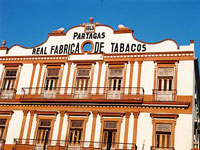
Even non-smokers have to agree that a visit to Cuba would not be complete without investigating the island's most famous export: cigars. The art of cigar-making in Cuba is old and a source of national pride. The three main factories in Havana offer tours for visitors to see how the cigars are still rolled by hand.In the oldest factory, Partagas, founded in 1827, a reader is traditionally employed to keep workers entertained while they fashion the famous cigars; apparently this is the reason some of the famous cigars are named after literary characters. Tours run every 20-30 minutes, depending on what language you want to be guided in. A tour lasts about 45 minutes.Havana's other cigar factories are La Corona and the lesser-visited Romeo y Julieta. There are shops attached to the factories where cigars can be purchased. Visitors are advised not to buy cigars from people off the street, as these are usually rolled banana leaves fashioned into cigar look-alikes and the sellers are persistent hustlers. Los Cohiba Esplendidos are supposed to be the best cigars in Cuba, formerly only available to Fidel Castro.
Address : Partagas Factory: Calle Industria 520, Centro Habana
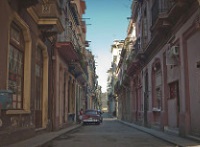
A five-mile (8km) esplanade, roadway and seawall, running between the harbour in Old Havana and the historically Russian area of Vedado, a stroll along El Malécon is the perfect way to start any Havana adventure.The two-hour walk, described by many as a cross-section of Cuba's history, begins in Habana Vieja, where the buildings have had their famous pastel colours faded by the sun and the salty sea-wind, and goes past various monuments to significant figures in Cuba's struggle history (including Máximo Gomez and Calixto García), before ending up in the area of Verdado, a funky downtown district with great sights and vibrant nightlife.Walking El Malecon one bears witness to the strange disparity in Cuba between the wealthy tourist hotels and the rundown local joints. Construction of the walkway began in 1901 and its main purpose was to protect the city from the sea but today it is a very popular social haunt.It is very different to do the walk during the day and at night; perhaps the best way is to begin in the afternoon sun so that you can see the colours of the city, and finish in the evening when the lights come on.
Address : Between the harbour and Vedado, Havana
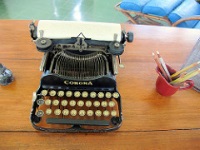
Ernest Hemingway may be an American by birth, but Cubans have adopted this rambunctious writer/adventurer as their own - especially in Havana, where you'll find memorials to his apartments, regular haunts, and even favourite drinks. Hemingway was a keen fisherman (and a keen drinker) and the bars and harbour in Cuba are full of references to him and his escapades.Finca Vigia, his home just outside Havana, has been restored and now functions as a museum to the famous author. The residence is kept as it was when he lived there, and visitors can see his typewriter and library of over 8,000 books. It was in this house that Hemingway wrote two of his most famous books, For Whom the Bell Tolls and The Old Man and the Sea (for which he was awarded the Nobel Prize for Literature).Walking around the house feels very personal and informal which makes it a special experience for fans of Hemingway. The museum has been known to close often for renovations so try to ensure that it is open for visitors before setting off. Although, a walk around the house and area may prove sufficiently exciting for many.
Address : Finca Vigía, Havana
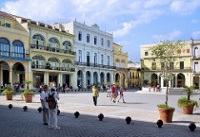
Old Havana (Habana Vieja) is a very special area in Cuba which delights travellers and locals alike. This historic section of Cuba's capital was founded in 1519 and for centuries was an important naval port of colonial Spain. Being in such a strategic position, the city was targeted by pirates and fought over on numerous occasions, and the ruins of the defensive walls that surrounded the city can still be seen.During the years of Prohibition in the United States, Habana Vieja turned into a playground for Americans who flocked here for the cheap liquor, gambling, prostitution and hedonistic lifestyle. One of the district's most famous bars is La Bodeguita Del Medio, which was the favoured haunt of legendary US writer, Ernest Hemingway.The Old City now also contains museums, hotels, restaurants and shops lining the original cobble-stoned streets. Surrounding the picturesque squares (plazas) are beautiful restored colonial buildings with grand facades, and striking churches that form a magnificent setting for the late afternoon chess and domino games and salsa music. The Plaza de Armas was the seat of power in Cuba for 400 years, being the base of operations for the Spanish Captain's General, US military governors and the Cuban president, and today is home to an interesting book market, among other things.
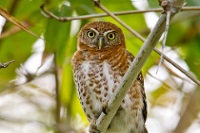
Cuba is developing its eco-tourism potential and one of the prime spots for getting back to nature is the Montemar Natural Park on the Zapata Peninsula in the province of Matanzas (about 75 miles/120km from Havana). The hour long drive from Havana is well worth the effort as the park can occupy the whole family for at least a day.The peninsula is home to one of the largest swamps in the Caribbean, and its vast area also includes forests, crystal-clear lagoons and canals. Its exuberant flora, including more than 900 species of plants (115 of them endemic to Cuba) is complemented by its rich fauna, consisting of 160 bird species and 12 types of animal, including crocodiles.One of the park's many interesting features is the Laguna del Tesoro (Treasure Lagoon), a fresh water reservoir inhabited by golden trout. In the midst of the lagoon is a reproduction Taino village with its houses built on pillars. There are also nature trails, a bird watching centre, and the largest flooded cave in Cuba. There is also a scuba centre, crocodile farm and several restaurants. Kids will love the chance to be outdoors and expend some energy, and things like the crocodile farm and the flooded cave are delightful attractions for children and adults alike.
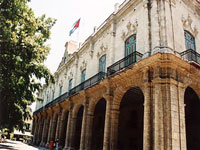
Built in 1791, the stately Baroque residence of Cuba's colonial governors and former Presidential Palace, the Palace of the Captains General, stands as an impressive sight on the Plaza de Armas and is now the repository for the city's primary museum collections. The building itself is truly wonderful, with a central courtyard containing a white marble statue of Christopher Columbus. It has been beautifully restored and by itself justifies the entrance fee.The museum's displays and exhibits tell the tale of Havana, from its founding to the present day, including rooms devoted to the Cuban wars for national independence. The colourful Hall of Flags contains the original Cuban flag, as well as a number of others used by the Spanish colonial government. There are also exhibits relating to archaeology, folklore and weaponry, and an art collection that includes porcelain, paintings and furniture of historic value and great beauty.The treasures are varied and interesting but a guided tour does help supplement the labels which are not comprehensive. Visitors should note that there have been reports of the museum attendants trying to hustle tourists out of money by offering to take photos for them, so be aware that they may approach you.
Address : Calle Tacón, Plaza de Armas, Habana Vieja
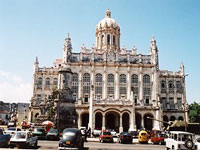
Formerly the Presidential Palace and headquarters of the Cuban government, this impressive building now houses documents, photographs and artefacts pertaining to the Cuban Revolution. The museum provides an excellent introduction to Cuba's historical struggle for independence - there are even blood-stained and bullet-riddled uniforms on display!Prepare to spend a few hours wandering from room to room as the story unfolds, from Spanish colonial times to the present day. In front of the museum entrance stands a watchtower that was part of the old city walls, as well as a tank used by Fidel Castro during the battle of the Bay of Pigs in 1961. Behind the museum is the glass-encased yacht, the 'Granma', which brought 82 revolutionaries, including Che Guevara and Fidel Castro, from Mexico to set the 1956 Revolution in motion.The anti-imperialist tone of the museum will delight some and possibly upset others but for history buffs and those interested in the revolution this museum is a treasure trove. Make sure to get the correct change at the museum counter as there have been reports of minor money scams.
Address : Calle Refugio, between Calle Agramonte and Av de las Misiones, Centro Habana
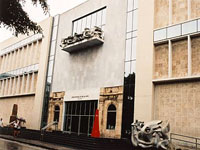
The Bellas Artes Museum was founded in 1913 and is now split into two buildings, both architecturally interesting and impressive, housing International and Cuban art respectively. Both fine art collections are worthy of detailed exploration and should delight any visitor interested in art.The Colección de Arte Universal covers everything from ancient Greek artefacts and Latin American pieces to art by French, Dutch and Italian painters, and includes work by masters such as Gainsborough, Goya and Rubens. The Colección de Arte Cubano is also outstanding and covers works from the 16th to the 20th centuries by prominent Cuban artists.The Cuban galleries have rooms dedicated to religion, landscape, portraits and scenes from Cuban life. Of course, the hyperrealism of the revolution and post-revolution years is also prominent and this has probably become the style of art most associated with modern Cuba. Famous paintings in the contemporary section include Gitana Tropical by Victor Manuel Garcia (the 'Cuban Mona Lisa') and El Rapto de las Mulatas by Carlos Enriquez.
Address : Corner of Calle Trocadero (between Calles Zulueta and Monserrate) and Calle San Rafael (between Calles Zulueta and Monserrate)
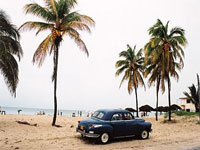
Twenty-five minutes east of Havana are the Playas del Este, a chain of sandy beaches stretching for six miles (10km) between Bacuranao and Guanabo. On the weekends, they are generally packed with Cubans escaping the city.There are a few tourist hotels lining the coast, but other than that facilities are limited. For those who need an escape from the city the beaches make a good day trip; however, those expecting pristine tropical island beaches might be disappointed. The ocean is still unbelievably inviting, with clear, warm turquoise water, but the beaches themselves tend to suffer from all the rubbish left by the crowds.During the week the beaches are much quieter and cleaner so that is the time to go if you want a solitary, peaceful experience. There are a number of pristine 'tourist' beaches in Cuba but the Playas del Este are fun because they offer a more genuine experience of the festive Cuban beach lifestyle; if you want to mix with locals and enjoy people watching then this is the perfect place to park your towel. There are usually lots of vendors selling food and beer at reasonable prices on these beaches and people are generally very friendly.
Address : Ave Las Terrazas e/11 y 12, La Habana del Este
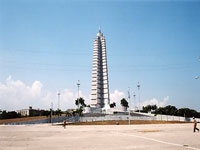
The Plaza de la Revolucion is a famous landmark in Havana. The gigantic square, which is dominated by the imposing José Martí Memorial, has provided the setting for numerous political rallies, and the podium in front of the memorial is where important political figures, like Fidel Castro, have addressed more than a million Cubans on important occasions, such as 1 May and 26 July each year.At the foot of the memorial is a museum dedicated to José Martí, a national hero who would most likely have become Cuba's first president had he survived the Second War of Independence in 1895. It is possible to take the elevator to the top of the 138-foot (42m) memorial, the highest structure in the city, to see some great views of Havana and get some photographs. Located behind the memorial are the closely guarded offices of Castro.Opposite the memorial, on the far side of the square, is the much-photographed Che Guevara image with the slogan Hasta la Victoria Siempre(Forever Onwards Towards Victory), that identifies the Ministry of the Interior building. The square is worth a visit if for no other reason than the important role it has played in Cuban history.
With 22 miles (36km) of sandy, white, palm-fringed beach, Varadero Beach has often been referred to as one of the world's most beautiful. The incredibly clear water makes for amazing diving, fishing and snorkelling opportunities, and children splashing around will even be able to spot some fantastic fish with the naked eye. Glass-bottomed boat companies abound here too. Varadero Beach is a wonderful place to spend the day and an absolute must-visit while in Cuba.Varadero is situated on a spit of land that reaches out into the Atlantic, a two-hour drive to the east of Havana. There are 23 world-renowned dive spots along this stretch of beach and dive centres providing lessons and equipment. There is also deep sea fishing, windsurfing, parasailing, kayaking and sailing to be enjoyed. Outside of the water there are also numerous restaurants, cabaret spots, nightclubs, land sport opportunities, a skydiving centre, golf courses, and much more.The hotels in Varadero, Cuba's most popular beach resort, are some of the best in the Caribbean. Al Capone used to make this his holiday hideaway when taking a break from racketeering in Chicago. There are a number of big shopping complexes and artisan markets that sell a wide variety of souvenirs. There are also many bars and restaurants in Varadero, and it isn't hard to find live music.Whether you are visiting for a day on the beach, or staying at the resort for a holiday, Varadero is unmatched in Cuba for its natural beauty and its touristic facilities.

Travel Guide powered by Word Travels, copyright © 2023 Globe Media Ltd. By its very nature information in this travel guide is subject to change at short notice and travellers are urged to verify information on which they're relying with the relevant authorities. Neither Globe Media Ltd nor Travel Vogue can accept any responsibility for any loss or inconvenience to any person as a result of information contained above.